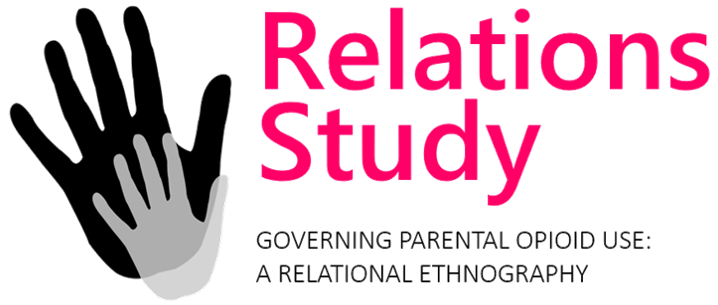By Amy Chandler
In 2014 some of the members of the Relations Study carried out a study with parents and practitioners, exploring experiences of caring for babies who were at risk of developing Neonatal Abstinence Syndrome (NAS) – drug withdrawal symptoms. NAS is often highlighted as a key ‘risk’ or ‘negative outcome’ that can happen when mothers use certain drugs during pregnancy. However, our research shows how NAS is an ‘uncertain’ diagnosis, and one that is very strongly affected by stigma in relation to drug use, and especially drug use in pregnancy.
We interviewed 16 parents prescribed opioid substitution therapy (OST) who had recently had a baby at risk of NAS, and held multi-disciplinary focus groups with 27 health and social care practitioners in Scotland.

Avoiding NAS
Echoing an earlier study with parents who used drugs in pregnancy (Chandler et al., 2013), many parents we spoke to emphasised the importance of trying to avoid babies ‘getting’ NAS. The primary way in which they talked about reducing the risk of NAS was by minimising and reducing their drug use. However, this runs counter to recommendations by substance use specialists, who emphasised the importance of mothers remaining stable on opioid substitution therapies (i.e. not reducing/coming off OST during pregnancy), whilst avoiding illicit drug use, in order to improve the overall health and wellbeing of mother and baby, irrespective of NAS. In some cases, this meant increasing OST dosage in late pregnancy.
These competing goals and demands – to maintain stable opioid substitution, but to also reduce dosage – were difficult for parents, especially mothers, to navigate.
Uncertainty and blame
Despite the strong emphasis among parents (and among some social work practitioners we spoke to) regarding reducing drug use, including reducing opioid substitution prescriptions, most participants also talked about the ‘uncertainty’ of NAS. NAS was understood to happen in an unpredictable way: mothers on high or low doses of methadone could have babies who develop drug withdrawal symptoms; mothers who did or did not use illicit drugs could have babies with symptoms.
However, this understanding was held simultaneously with a view by many that the symptoms babies with NAS exhibited were ‘caused’ by the mother and her drug use, and that she could or should therefore be ‘blamed’ for this.
The ‘threat’ of the neonatal care unit
Another way in which the difficult status of NAS and its relationship to broader stigmas relating to drug use and motherhood (Knight, 2015) emerged was in how admission of the baby to the neonatal unit was talked about. Admission to the neonatal care unit for the treatment of NAS was interpreted as a ‘failure’ for mothers, a sign she had not taken proper care of herself and her baby – and had likely used illicit drugs. As such, parents talked about admission to the neonatal unit as a threatening process, and one that may in some cases have been used by professionals, or at least experienced, as a ‘threat’.
In this quote, Ryan (a pseudonym) discusses both the uncertainty of the scoring process for ascertaining severity of NAS symptoms in the postnatal ward, and the way that these scores were drawn on in decisions about where a baby should be cared for. Notably,
“…they would come and tell you, just for instance, “I think, oh she’s only scoring a seven” and then we would talk to the midwife later: “oh she’s scoring a nine”. I says, “well the one told us seven earlier”. And then another time they were saying, “oh she’s scoring a nine”, and then the next thing, “she’s scoring 11”. But the woman was saying “if it ever goes past a 10 then they go straight to special baby care [neonatal unit]”” Ryan
NAS and loss of custody
Our research findings about the role of uncertainty, blame and threats in relation to NAS need to be understood in a broader context where parents who use drugs face very real threats to family life. Many parents we spoke to in this study had lost custody of older children, and were acutely aware that their parental responsibilities and rights were not a given.
In this context, the uncertainty about what NAS meant, how it was scored or ‘diagnosed’, was both acute, and acutely stressful.
More hopeful understandings?
In a paper published in 2020 (Chandler et al., 2020), we argued that NAS might be better understood and responded to as a ‘social diagnosis’ (Brown et al., 2011). Rather than being seen as an individual outcome of a mother’s drug use, NAS symptoms could be seen as related to a more complex set of social factors and relationships: between parents, practitioners, and their baby.
NAS is uncertain, is not solely tied to one individual mother’s drug use, but a much more complicated set of social and political factors: austerity and financial resources, criminalisation of drug use, access to secure and comfortable housing, stigmatisation of drug use and poor women and mothers, to name just a few.
Approaching NAS as a ‘social diagnosis’ might open up alternative ways of caring for mothers and babies at risk of NAS, both pre and post-birth. The uncertainty of NAS could be foregrounded, with greater acknowledgement of the broader ‘causes’ of NAS symptoms in babies. Further, care for babies at risk of NAS would prioritise involvement of parents, and a consideration of relationships between parents and babies, and the contexts in which such care takes place. Parents in our study frequently underlined the stressful context of hospital, arguing that they and their babies fared far better at home. Ensuring that parents have a secure home in which to care for their babies thus becomes crucial, again pointing to the importance of understanding NAS as a social production, rather than narrowly as a biological outcome of drug use in pregnancy.
Brown, P., Lyson, M., & Jenkins, T. (2011). From diagnosis to social diagnosis. Social Science & Medicine, 73, 939-943.
Chandler, A., Whittaker, A., Cunningham-Burley, S., Elliott, L., Midgley, P., & Cooper, S. (2020). Diagnosing uncertainty, producing neonatal abstinence syndrome. Sociology of Health & Illness, n/a.
Chandler, A., Whittaker, A., Cunningham-Burley, S., Williams, N., McGorm, K., & Mathews, G. (2013). Substance, structure and stigma: Parents in the UK accounting for opioid substitution therapy during the antenatal and postnatal periods. International Journal of Drug Policy, 24, e35-e42.
Knight, K.R. (2015). addicted. pregnant. poor. Durham: Duke University Press.
